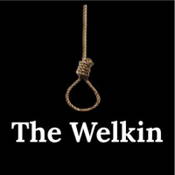
Overview
Synopsis
The year is 1759 and the country awaits the anticipated arrival of Halley’s Comet. The daughter of Lady Wax has been murdered and the residents of this rural town are out for blood. Sally Poppy has been found guilty of the crime, along with her lover who has already been hanged. Sally’s journey to the noose is dependent on whether she is really pregnant, as she claims, or openly lying. If she is pregnant, she will be transported and her life will be saved. Sally’s fate lies in the hands of twelve women, gathered together to make a unanimous decision one way or the other. Some of the women have reasons for being part of the jury, others cannot wait until their duty is over. Their status, age, and class is varied; one is in the first flush of marriage, another is in her eighties. One of the women is barren, another has had twenty one children. Amidst their bickering and teasing, one woman understands the importance of their presence in the jury room. The midwife, Lizzy, knows that, despite the mob baying for blood outside the window, the twelve women have the chance to make an important, life-changing decision in a world governed by men. However, there is a devil in their midst and the women must wrestle with their consciences to come to a decision.
Show Information
- Book
- Lucy Kirkwood
- Category
- Play
- Age Guidance
- Mature Audiences (M)
- Number of Acts
- 2
- First Produced
- 2020
- Genres
- Dark Comedy, Historical/Biographical
- Settings
- Multiple Settings, Period
- Time & Place
- A small town on the border of Norfolk and Suffolk, England, March 1759
- Cast Size
- large
- Licensor
- Nick Hern Book
- Ideal For
- College/University, Diverse Cast, Ensemble Cast, Large Cast, Mature Audiences, Professional Theatre, Regional Theatre, Mostly Female Cast, Includes Young Adult, Adult, Mature Adult, Elderly, Child Characters
Context
The matrons can be of any ethnic background; indeed it is crucial the group reflects the present-day population of the place the play is being performed in, not East Anglia in the 1750s.
to read the context for The Welkin and to unlock other amazing theatre resources!Plot
Characters
| Name | Part Size | Gender | Vocal Part |
|---|---|---|---|
|
Lead |
Female |
Non-singer |
|
|
Lead |
Female |
Non-singer |
|
|
Supporting |
Female |
Non-singer |
|
|
Supporting |
Female |
Non-singer |
|
|
Supporting |
Female |
Non-singer |
|
|
Supporting |
Female |
Non-singer |
|
|
Supporting |
Female |
Non-singer |
|
|
Supporting |
Female |
Non-singer |
|
|
Supporting |
Female |
Non-singer |
|
|
Supporting |
Female |
Non-singer |
|
|
Supporting |
Female |
Non-singer |
|
|
Supporting |
Female |
Non-singer |
|
|
Supporting |
Female |
Non-singer |
|
|
Supporting |
Male |
Non-singer |
|
|
Featured |
Male |
Non-singer |
|
|
Featured |
Male |
Non-singer |
|
|
Featured |
Female |
Non-singer |
|
|
Featured |
Female |
Non-singer |
|
|
Featured |
Female |
Silent |
Songs
A song with an asterisk (*) before the title indicates a dance number; a character listed in a song with an asterisk (*) by the character's name indicates that the character exclusively serves as a dancer in this song, which is sung by other characters.
Monologues
Scenes
Key Terms
Sorry! We do not currently have terms for this guide.
Videos
Quizzes
Themes, Symbols & Motifs
Sorry! We do not currently have learning modules for this guide.
Quote Analysis
Sorry! We do not currently have learning modules for this guide.
